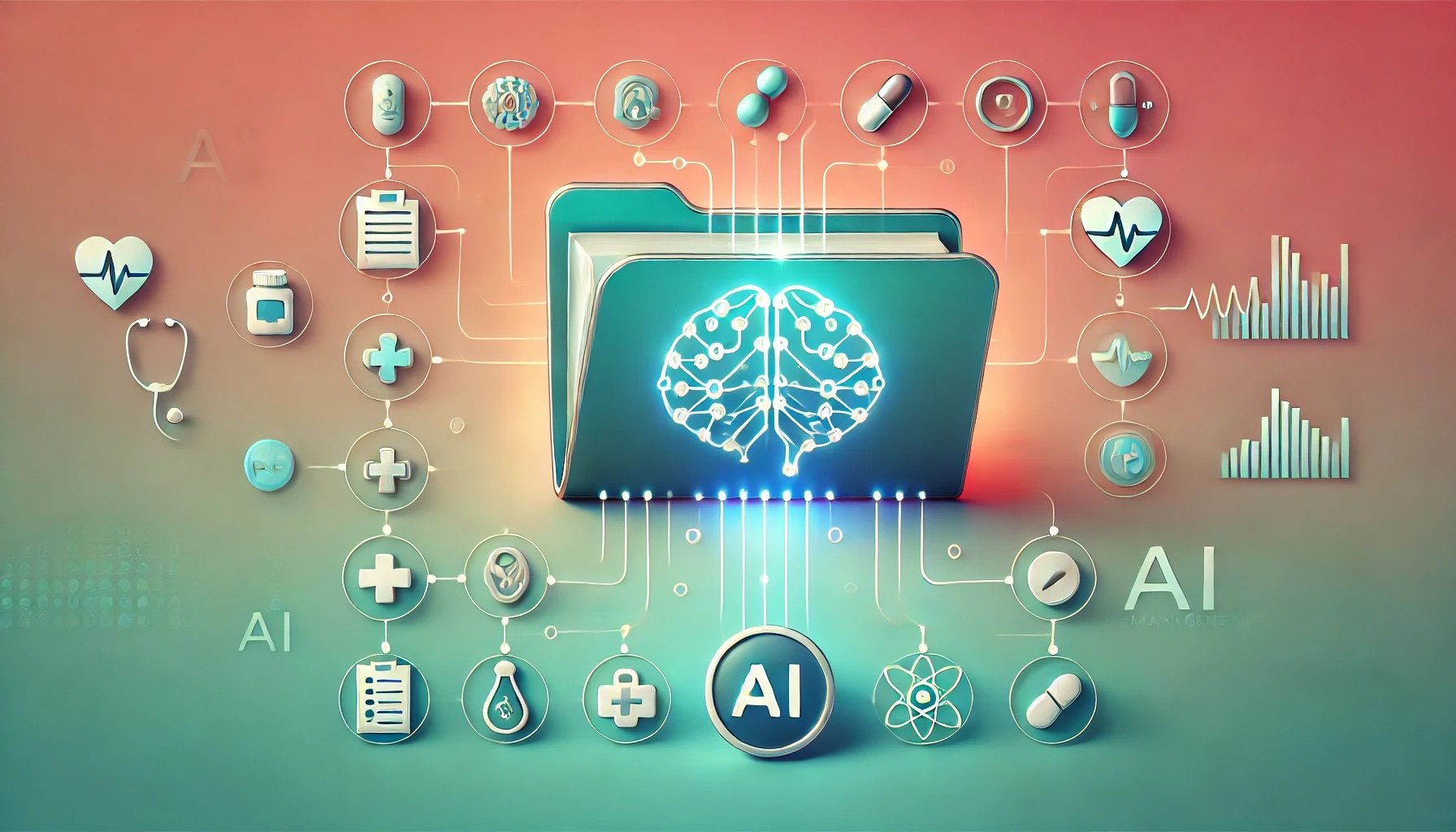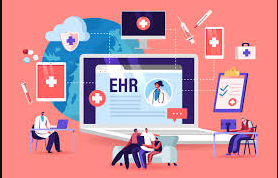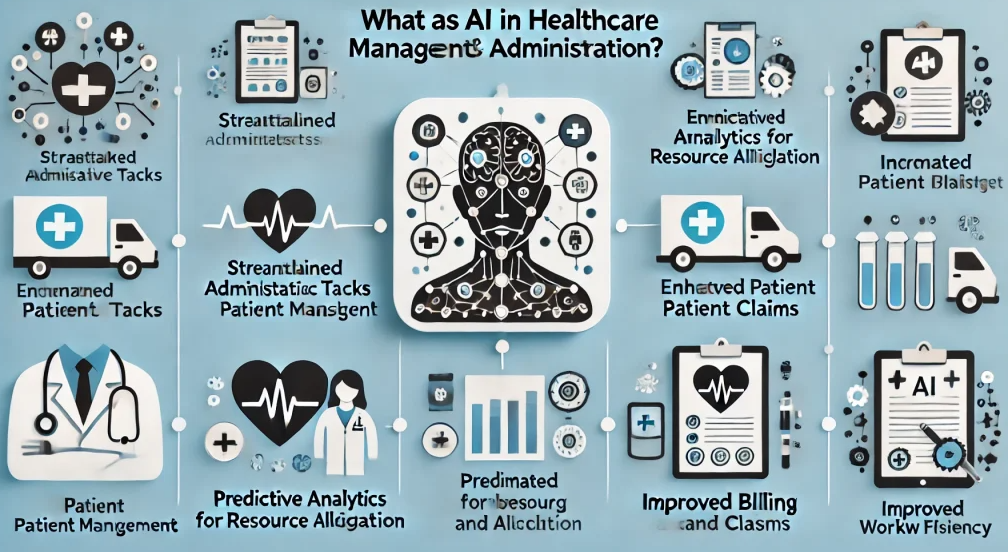AI-Powered Electronic Health Records: Streamlining Data Management
 Venkata Krishna Azith Teja Ganti
Venkata Krishna Azith Teja Ganti
Electronic Health Records (EHRs) have become the cornerstone of modern healthcare, offering a comprehensive and digital approach to managing patient health information. Traditionally, EHR systems have been used to store patient data, including medical histories, diagnoses, medications, and treatment plans. While these systems have made significant strides in improving healthcare efficiency, the sheer volume of data generated in a typical healthcare setting poses ongoing challenges. This is where Artificial Intelligence (AI) comes into play. AI-powered EHR systems have the potential to revolutionize how healthcare providers manage and utilize patient data, offering a range of benefits such as improved decision-making, more efficient workflows, and enhanced patient outcomes.
The Limitations of Traditional EHR Systems
Although traditional EHR systems have brought about many improvements, they still face a number of challenges. A significant issue is the fragmented nature of health data across different platforms. For instance, patient records may be stored in multiple systems within a healthcare organization or even across multiple healthcare providers, making it difficult for physicians and healthcare staff to get a comprehensive view of a patient's medical history.
Additionally, the process of entering, updating, and retrieving data from traditional EHR systems can be time-consuming and prone to human error. Many healthcare professionals spend a substantial portion of their time on administrative tasks, such as entering data, instead of focusing on patient care. Moreover, the volume of unstructured data, such as physician notes and diagnostic images, creates further complications in managing and extracting valuable insights from the information.

How AI Enhances EHR Systems
AI-powered EHR systems are designed to address these issues by leveraging advanced machine learning (ML) algorithms, natural language processing (NLP), and predictive analytics. These technologies work together to streamline data management and provide real-time insights that can enhance the quality of care. Here are some of the key ways AI is transforming EHR systems:
Automating Data Entry and Documentation: One of the most significant advantages of AI in EHR systems is the ability to automate the process of data entry. Natural language processing (NLP) allows AI to extract key information from unstructured data, such as physician notes and clinical reports, and convert it into structured data that can be easily incorporated into a patient’s record. By automating these tasks, AI reduces the administrative burden on healthcare providers, allowing them to spend more time on patient care. For example, AI can transcribe doctor-patient conversations and update the EHR in real-time, capturing essential details without requiring manual input.
Data Integration and Interoperability: AI-powered EHR systems can seamlessly integrate data from various sources, including wearable devices, lab results, imaging systems, and different healthcare institutions. By combining structured and unstructured data into a unified system, AI enables healthcare providers to have a more comprehensive view of a patient’s health. For instance, AI can analyze data from a patient’s wearable fitness tracker, such as heart rate and activity levels, and incorporate that information into the EHR to provide a holistic view of the patient’s health status. This data integration improves the accuracy of diagnoses and treatment plans.
EQ.1.Data Integration and Feature Fusion

Predictive Analytics and Early Detection: AI can analyze large volumes of health data to identify patterns and predict potential health risks. By leveraging predictive analytics, AI-powered EHR systems can identify patients who are at higher risk for certain conditions, such as heart disease, diabetes, or sepsis. For example, AI algorithms can analyze trends in a patient’s vital signs, lab results, and medical history to detect early warning signs of complications, enabling healthcare providers to take preventive measures before conditions worsen. Early detection and intervention are key to improving patient outcomes and reducing healthcare costs.
Clinical Decision Support: AI-powered EHR systems can provide healthcare providers with real-time clinical decision support. By analyzing a patient’s medical history, current symptoms, and relevant medical literature, AI can suggest potential diagnoses, treatment options, and medication dosages. For example, if a patient presents with certain symptoms, AI can analyze the medical records and flag potential conditions that match the symptoms, helping clinicians make informed decisions faster. This support can also help reduce the likelihood of errors and ensure that patients receive personalized and evidence-based care.

Improving Patient Engagement and Communication: AI can also enhance patient engagement by providing patients with more access to their own health data. Through AI-powered patient portals, patients can receive tailored health recommendations, track their progress, and communicate with their healthcare providers more easily. For example, AI-powered systems can send automated reminders for follow-up appointments, medication refills, or preventive screenings, ensuring that patients stay on top of their health. Additionally, AI-powered chatbots can assist patients by answering common questions and providing guidance on their treatment plans, improving the overall patient experience.
Reducing Errors and Enhancing Accuracy: AI algorithms are highly effective at identifying inconsistencies or discrepancies in medical records. For example, if a patient’s medications or allergies are not properly documented, AI can flag these issues and alert healthcare providers before they lead to adverse events. Furthermore, AI can help reduce human error in medication administration by cross-checking drug interactions, allergies, and dosages, thus improving patient safety.
EQ.2.Predictive Model for Patient Risk (e.g., Sepsis Risk)

Challenges and Considerations
Despite the numerous benefits, integrating AI into EHR systems does come with certain challenges. One of the main concerns is data privacy and security. Healthcare data is highly sensitive, and ensuring the security of patient information is paramount. AI systems must be designed with robust encryption and security protocols to safeguard patient data from breaches.
Another challenge is the need for healthcare providers to adopt and adapt to these new technologies. While AI-powered EHR systems can significantly improve efficiency and patient care, the implementation process can be time-consuming and expensive. Healthcare institutions must invest in the necessary infrastructure, train staff, and ensure that the technology integrates smoothly with existing systems.
Finally, there is the issue of trust in AI-generated insights. Clinicians may be hesitant to rely on AI recommendations, especially when it comes to clinical decision-making. It is essential that AI systems are transparent, explainable, and continuously monitored to ensure that the insights they provide are accurate and reliable.

Conclusion
AI-powered Electronic Health Records represent the future of data management in healthcare, offering significant improvements in efficiency, accuracy, and patient care. By automating administrative tasks, enhancing decision-making, and providing predictive insights, AI can help streamline healthcare workflows and reduce clinician burnout. While challenges such as data security and adoption barriers remain, the integration of AI into EHR systems holds tremendous potential to transform healthcare delivery, ultimately leading to better patient outcomes and more efficient healthcare systems. As technology continues to evolve, AI’s role in EHR systems is likely to expand, paving the way for a smarter, more connected healthcare ecosystem.
Subscribe to my newsletter
Read articles from Venkata Krishna Azith Teja Ganti directly inside your inbox. Subscribe to the newsletter, and don't miss out.
Written by
